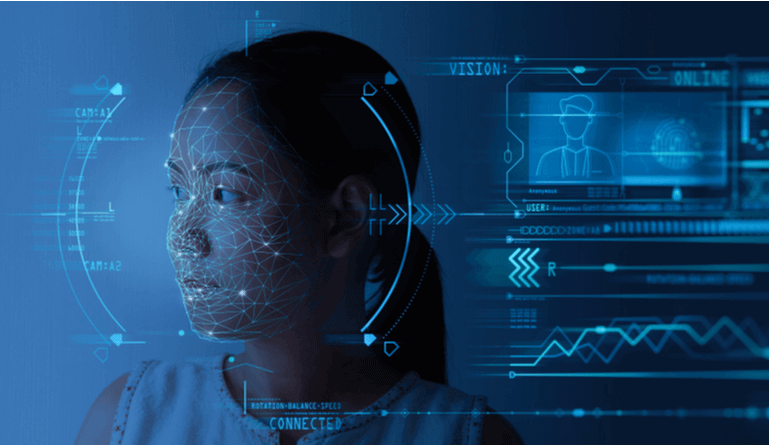Professionals define face recognition as a biometric software app that is able to uniquely identify or verify a person through comparison and analysis patterns based on the person’s facial contours. Each person has a unique facial structure. Special software can analyze it, comparing it with information in a database for subsequent identification of who you are.
How Does it Work?
There are several methods to create an algorithm for facial recognition.
An empirical approach was used at the very beginning of the development of computer vision. It is similar to how humans use their brains to detect a face. For instance, the forehead is usually brighter than the central part of the face, which, in turn, is uniform in brightness and color. Another sign is the presence of parts of the face in the image – nose, mouth, eyes. This approach is easy to implement but is practically useless when there are any foreign objects in the background, several faces in the frame, or when the angle changes.
Another approach uses invariant features characteristic of the face image. As in the previous method, it is based on an attempt by the system to “think” like a human being. The method shows the characteristic parts of a face; its borders, changes in shape, contrast, etc., combines all these features and verifies. This method can be used even when the head is turned, but recognition becomes impossible in the presence of other faces or a non-uniform background.
All modern face recognition systems use systems that learn using test images. For training, bases with and without images containing faces are used. Fragments of the image are characterized as a vector of features, with which algorithms for determining an object in a frame determine whether a part of an image is a face or not.
Technologically, systems can sometimes be very different in terms of face recognition, but they all have roughly universal principles of operation:
-
Detection
For starters, the camera will detect a person’s face, whether they are alone or in a crowd. The face is best recognized when a person is looking directly into the camera. Modern technological advances also make it possible to detect a face in situations where a person is not looking directly into the camera (of course, within certain limits).
-
Analysis
When a photo of a face is taken, analysis begins. Most face recognition solutions use 2D images instead of 3D volumetric images because they can more easily match 2D photos with publicly available images or photos in a database. Each face is made up of distinguishable features or anchor points. Each human face has 80 nodal points. Facial recognition software analyzes nodes like the distance between your eyes or the shape of your cheekbones.
-
Image-to-Data Conversion
After that, the analysis of your face turns into a mathematical formula. Your facial features become a numeric code. Such a numeric code is called a faceprint. Similar to the unique structure of the thumbprint, each person has their facial print.
Where is Facial Recognition Used?
Face recognition technologies are used in a wide variety of areas:
- Security in crowded places
- Avoidance of illegal entry, intruder search
- Face control in the catering and entertainment segment, search for suspicious and potentially dangerous visitors
- Verification of bank cards
- Online payments
- Contextual advertising, digital marketing
- Forensics
- Teleconferences
- Mobile applications
- Search for photos in large databases
- Tagging people on photos on social networks, and many others
While facial recognition technologies may seem futuristic, they are already actively used in a variety of ways. Here are some great uses for this technology.
-
Identification of genetic disorders
There are special medical applications such as Face2Gene and DeepGestalt that use facial recognition to detect genetic abnormalities. They analyze faces and compare them to a database of faces of people with various disabilities.
-
Theft
Many stores are equipped with facial recognition systems that distinguish people as a threat if they steal something from stores. Such systems can identify a shoplifter and notify the store owner, even if the thief has never been to the store before. While such a system can provide significant benefits to store owners, such systems’ effectiveness is often called into question.
-
School Safety
Facial recognition is also introduced in schools. One school in Sweden tried to use FRT to check attendance in class. Schools in the United States, especially New York, are beginning to test the use of facial recognition technology as an “early warning system” against threats from individuals such as sex offenders. The technology can also recognize ten weapons to prevent acts of violence in schools.
-
Airlines
Airlines such as Delta and JetBlue use facial recognition to identify passengers. Biometric facial scanning is optional but allows passengers to use their faces as a ticket, saving time, and reducing ticket verification costs.
Final Thoughts
Now you know the basics of facial recognition technology, and why it is important to use it in some every day, but in very different areas. What are the upcoming trends for facial recognition usage in your opinion? Feel free to share in the comments section.





